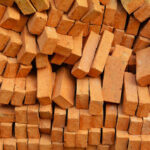Recently I got an email from one of our fans and he was asking help about what stresses should be considered while modeling dome in ETABS. He was confused in hoop, meridian and bending stresses. Here is the excerpt of this email.
I have modeled a dome with 40 ft radius in Etabs. But i am
bit confused in providing the reinforcement. In manual design there are only simple stresses (meridian and hoop) but in my model there are bending stresses too. Do i have to apply reinforcement for both B.M and these meridian and hoop stresses?
Also which of these moment (M11 & M22) and forces (F11 & F22) should be used for meridian reinforcement. and which are to be used for hoop reinforcement
Now lets first learn some basics about dome before going in detail of the answer :-
What are Domes?
Domes are thin shells in the form of surfaces of revolution. J. Heyman, (1995) defines a thin shell as a shell, of thickness t, \’for which R/t >20 where R is the minimum radius of curvature\’. This thickness of the shell may vary across its surface, e.g. it may be increased, if possible, in some areas to prevent cracking.
A dome, like an arch is characterized by a thrust. A thrust comprises of two forces; the weight of the structure and the horizontal thrust. The thrust acts downwards but the overall direction is dependant on the profile of the arch and weight. The weight and flatness of an arch affect the horizontal thrust; the flatter an arch the larger the horizontal thrust.
The horizontal thrust normal affects the supports but also occurs at the crown on an arch balancing the other half of the arch. It can be controlled by buttresses or encircling ties.
Stresses in Domes
The analysis of a shell is concerned with two stresses: the stress that acts in the meridional direction and the stress that acts in the parallel direction. Meridians and parallels are illustrated in Figure 1, taken from Jacques Heyman \’The Stone Skeleton\’ (1995).
\’The Meridian plane is created by a surface of revolution through which the meridian (a plane curve) is rotated about an axis lying in the plane of the curve. When such a curve endures imposed loads (externally or due to self-weight) they must be resisted by internal forces\’ (David Billington, Thin Concrete Shell Structures, 1965).
Now coming back to the question asked
Solution
As from above discussion it can be concluded that you can directly design dome in Etabs Software and from details you can show meridian and hoop reinforcement only for your understanding.


















How do I get free safe 2016 software to download
How do I get free safe 2016 software to download